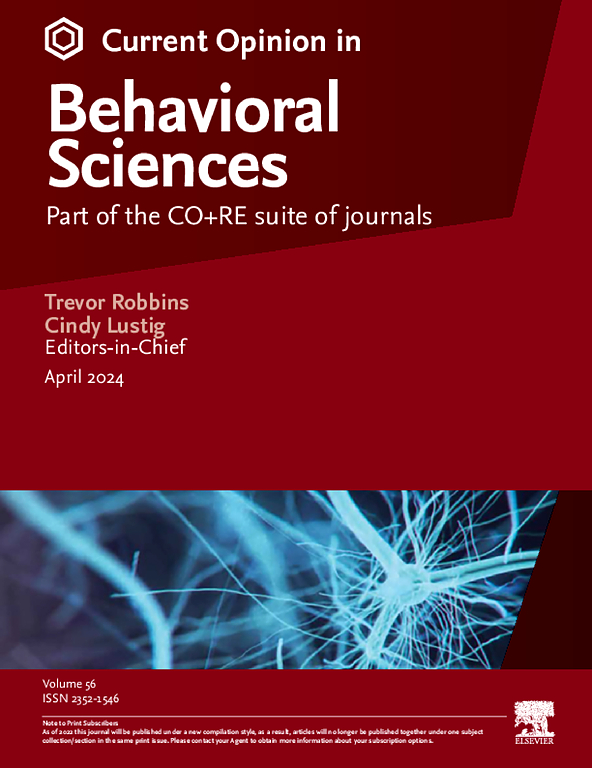精神疾病休息时的目标重放和默认模式网络动态
IF 3.5
2区 心理学
Q1 BEHAVIORAL SCIENCES
引用次数: 0
摘要
默认模式网络(DMN)是休息时自发大脑活动的标志,在各种精神疾病中发生改变,并与认知缺陷有关。然而,潜在的机制尚不清楚,靶向治疗的发展一直具有挑战性。从历史上看,精神病学的静息状态研究和认知神经科学的基于任务的研究都是独立发展的,这限制了将机制的见解转化为临床实践。神经解码方法的最新进展,特别是将休息时海马体回放与DMN活动联系起来的方法,已经开始弥合这一差距。通过在精神病理学研究中探索静息大脑活动的表征,我们可以更准确地表征dmn相关功能障碍并揭示症状相关机制。这些发展也为有针对性的干预奠定了基础:无创神经调节技术,如经颅聚焦超声,可用于检验因果假设和优化治疗策略。总之,这些创新为理解DMN和改善精神病学结果提供了一个更综合的框架。本文章由计算机程序翻译,如有差异,请以英文原文为准。
Targeting replay and default mode network dynamics during rest in psychiatric disorders
The default mode network (DMN), a hallmark of spontaneous brain activity during rest, is altered in various psychiatric disorders and linked to cognitive deficits. However, the underlying mechanisms remain unclear, and the development of targeted treatments has been challenging. Historically, resting-state research in psychiatry and task-based studies in cognitive neuroscience have progressed independently, limiting the translation of mechanistic insights into clinical practice. Recent advances in neural decoding methods, specifically those linking hippocampal replay to DMN activity during rest, have begun to bridge this gap. By probing the representations of resting brain activity in psychopathology research, we can more precisely characterise DMN-related dysfunction and uncover symptom-relevant mechanisms. These developments also lay the groundwork for targeted interventions: noninvasive neuromodulation techniques, such as transcranial focused ultrasound, can be used to test causal hypotheses and optimise therapeutic strategies. Together, these innovations offer a more integrated framework for understanding the DMN and improving psychiatric outcomes.
求助全文
通过发布文献求助,成功后即可免费获取论文全文。
去求助
来源期刊

Current Opinion in Behavioral Sciences
Neuroscience-Cognitive Neuroscience
CiteScore
10.90
自引率
2.00%
发文量
135
期刊介绍:
Current Opinion in Behavioral Sciences is a systematic, integrative review journal that provides a unique and educational platform for updates on the expanding volume of information published in the field of behavioral sciences.
 求助内容:
求助内容: 应助结果提醒方式:
应助结果提醒方式:


